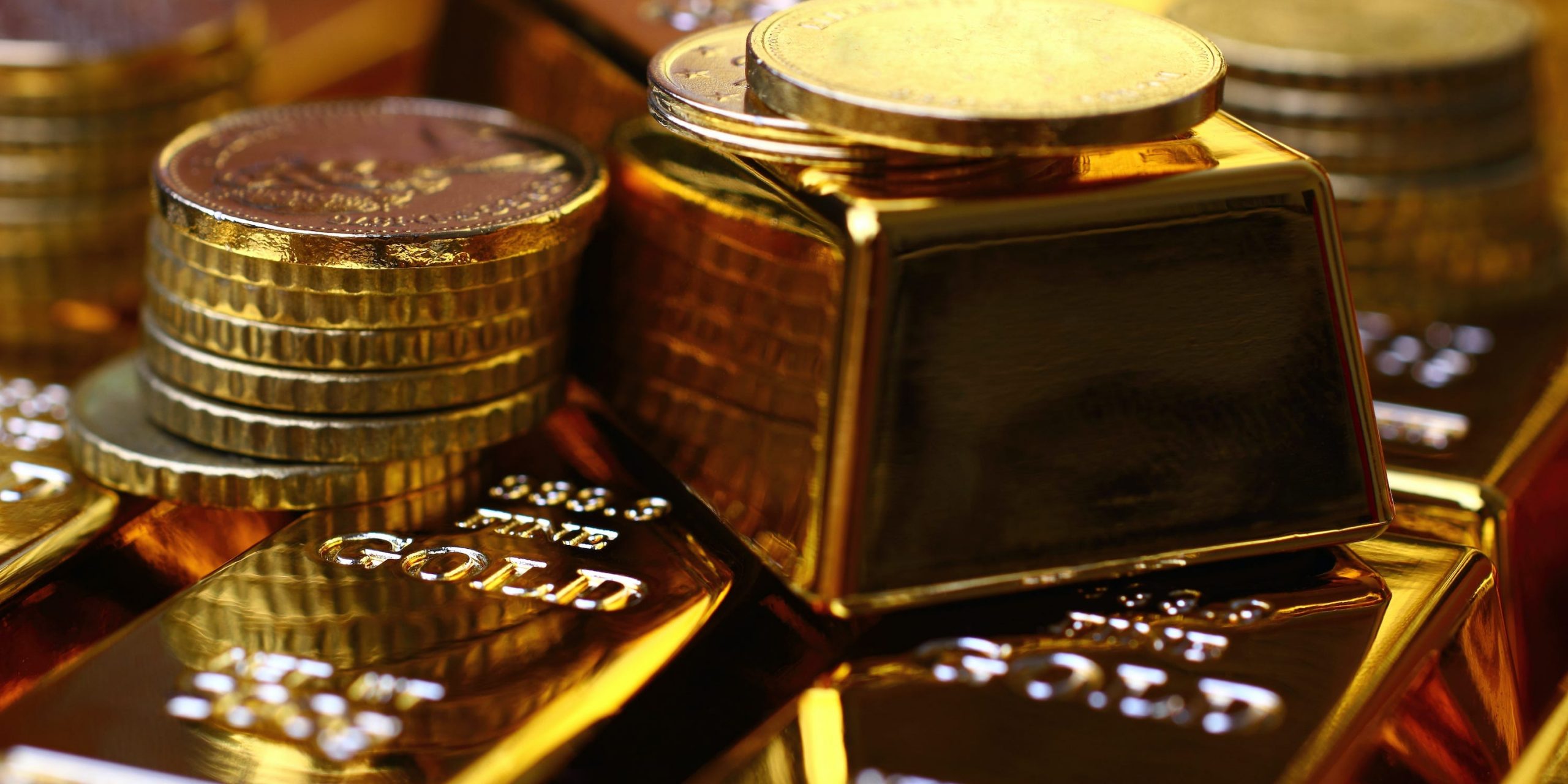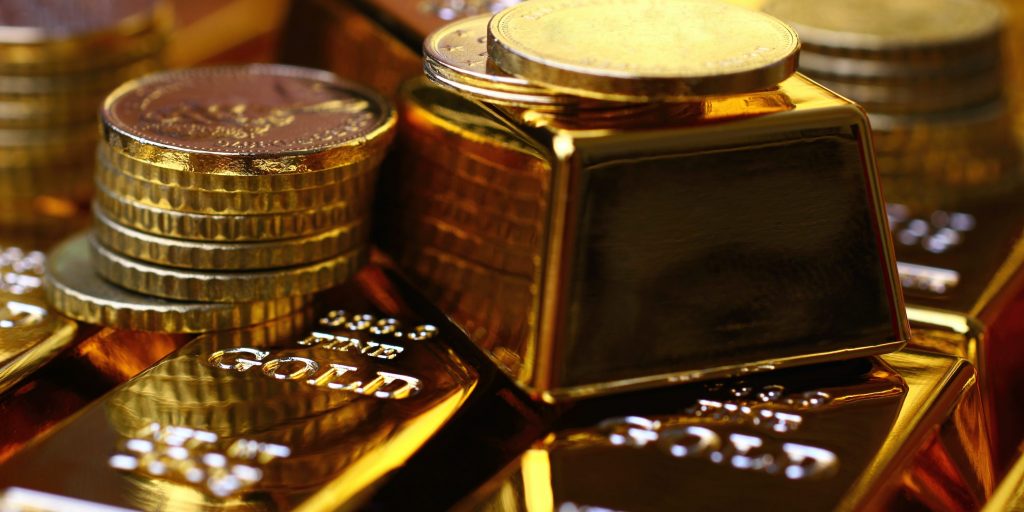
- Gold slid by 2.8% on Thursday after Fed officials indicated chances of two interest rate hikes in 2023.
- A more hawkish Fed stance weighed on equities, while the US dollar and bond yields rose.
- Higher interest rates drive investors away from safe-haven assets to higher-yielding investments.
- Sign up here for our daily newsletter, 10 Things Before the Opening Bell.
Gold prices fell almost 3% on Thursday, marking their largest one-day slide since January, after the Federal Reserve indicated it may raise US interest rates faster than it originally planned, which sent investors flocking into the US dollar and other higher-yielding assets.
A sudden hawkish development at Wednesday's FOMC meeting was the "dot plot" chart now showing the 2023 median dot pricing in two rate hikes in 2023, compared to zero hikes at the last meeting in March.
The yield curve responded swiftly, with the belly of the curve seeing the most movement, said Oliver Blackbourn, multi-asset portfolio manager at Janus Henderson, referring to a larger rise in near-dated Treasury yields than in longer-dated bonds.
An update on the interest rate outlook saw equities weaken, while the US dollar and bond yields all rose. 5-year US Treasury yields jumped around 0.1%, with the benchmark 10-year yield also higher at 1.569%. In contrast, 30-year US Treasury yields were little changed as the Fed's longer-run interest rate forecast remained the same at 2.5%. "This has acted as a reference point for the longest-dated Treasuries for some time," Blackbourn said.
11 of 18 governors wanted to keep rates at near-zero through 2023 with only six pricing in more than one hike, according to Deutsche Bank analysts. But on Wednesday, only five wanted to keep rates at near-zero through 2023, while eight governors projected three or more hikes.
Lower interest rates drive investors to alternative assets like gold, as other generally higher-yielding assets like bonds wouldn't be able to pay regular interest. This makes gold a safe haven, or a store of value, in times of economic uncertainty.
But Chairman Jerome Powell's tone has now shifted to optimism about the pace of growth for the job market, despite near-term bottlenecks, over the COVID-19 vaccination drive going strong. He also flagged the possibility that inflation could turn out to be higher and more persistent than expected.
Because gold bears no yield of its own, it cannot compete for investor cash when bond yields pick up. This is particularly true of so-called "real yields," or those that are adjusted for inflation. Real 5-year yields are still deeply negative, given the prevailing consumer inflation rate of 5%. But they have risen to -4.12% this week from -4.28% a week ago, meaning gold is far less attractive.
The US dollar was stronger against the euro on Thursday as currencies responded to changes in real yields. Higher real yields make the greenback more attractive to investors. Analysts expect this will put some pressure on European equities and currencies in the coming days.
"The Fed's hawkish pivot is a major buzzkill for gold bulls that could see some momentum selling over the short-term," said Edward Moya, a senior market analyst at OANDA. "Short-term Treasury yields will continue to rise and that should provide some underlying support for the dollar, which will keep commodities vulnerable."
Despite recent weakness for gold over the past week, its medium-and-longer term outlook remains bright, Moya said, adding that the $1,800 level is the limit that needs to be defended for bullish bullion investors.
Gold was last trading 2% lower at $1,809.45 per ounce on Thursday. It is down about 5% so far this year.
